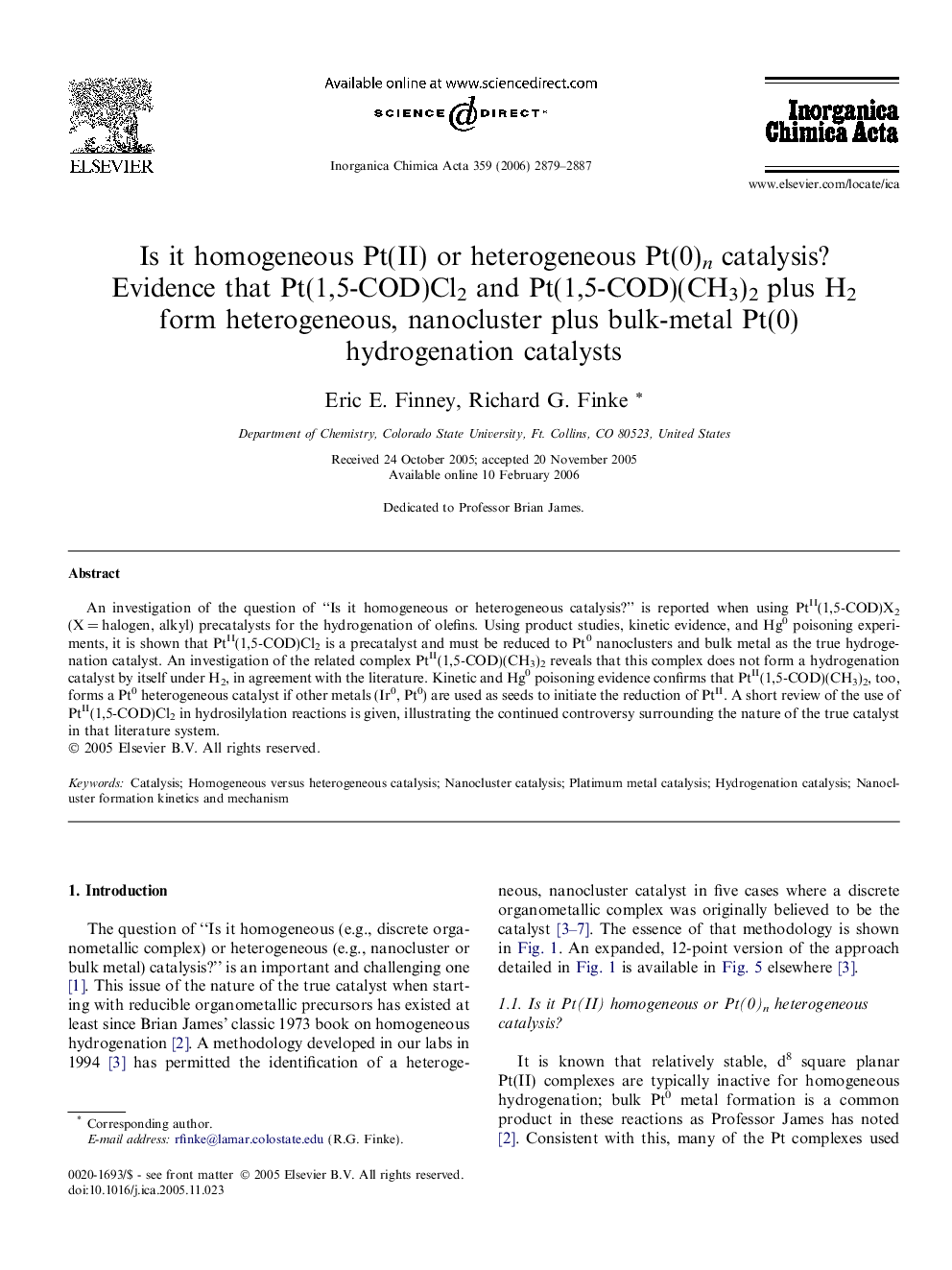| Article ID | Journal | Published Year | Pages | File Type |
|---|---|---|---|---|
| 1313029 | Inorganica Chimica Acta | 2006 | 9 Pages |
An investigation of the question of “Is it homogeneous or heterogeneous catalysis?” is reported when using PtII(1,5-COD)X2 (X = halogen, alkyl) precatalysts for the hydrogenation of olefins. Using product studies, kinetic evidence, and Hg0 poisoning experiments, it is shown that PtII(1,5-COD)Cl2 is a precatalyst and must be reduced to Pt0 nanoclusters and bulk metal as the true hydrogenation catalyst. An investigation of the related complex PtII(1,5-COD)(CH3)2 reveals that this complex does not form a hydrogenation catalyst by itself under H2, in agreement with the literature. Kinetic and Hg0 poisoning evidence confirms that PtII(1,5-COD)(CH3)2, too, forms a Pt0 heterogeneous catalyst if other metals (Ir0, Pt0) are used as seeds to initiate the reduction of PtII. A short review of the use of PtII(1,5-COD)Cl2 in hydrosilylation reactions is given, illustrating the continued controversy surrounding the nature of the true catalyst in that literature system.
Graphical abstractThe question of “Is it homogeneous or heterogeneous catalysis?” is investigated for the use of PtII(1,5-COD)X2 (X = halogen, alkyl) as precursors for the hydrogenation of olefins. Product studies, kinetic evidence, and Hg0 poisoning experiments reveal that PtII(1,5-COD)Cl2 is only a precatalyst and must be reduced to Pt0 nanoclusters and bulk metal which serve as the true hydrogenation catalyst.Figure optionsDownload full-size imageDownload as PowerPoint slide
